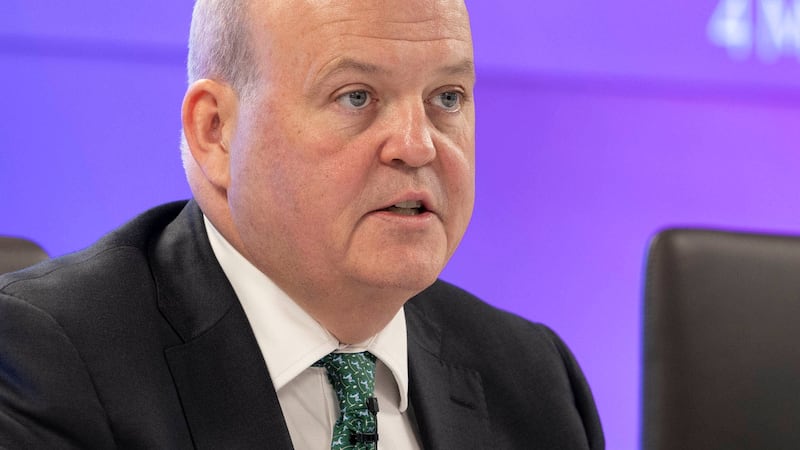Ireland’s housing crisis is likely to persist for at least another 15 years, according to the Department of Finance.
Housing demand is not expected to peak until the early 2030s, it said, with “pent-up demand” not fully eliminated until at least 2040.
The grim analysis was contained in Future Forty: A Fiscal and Economic Outlook to 2065, the department’s assessment of the economic and fiscal challenges facing the State between now and 2065.
The report based its estimate of future housing demand on current demographic trends, the growing preference for smaller households and the pent-up demand that has accumulated in recent years.
RM Block
In the central scenario, housing supply is assumed to reach 60,000 by 2030, a significant acceleration on the 30,300 delivered last year, “and then remain at that level until no longer required”.
The report noted that the number of workers in residential construction would need to grow “considerably”, by 50,000 according to one estimate, “to meet these targets”.
[ Median property price in Dublin 6 now almost €800,000, survey showsOpens in new window ]
The central projection also presumes that 25 per cent of newly-built dwellings after 2030 will be built as social homes, with 26 per cent of tenants in the rental market being eligible for social housing supports, including rent supports such as HAP (Housing Assistance Payment) and RAS (Rental Accommodation Scheme).
This would see the overall cost of housing for the exchequer rise to 2.3 per cent of national income at its peak before falling “once demand normalises” by 2040.

Tom O’Brien of Nephin Energy on the importance of gas, the potential of biomethane, and whether our energy bills will come down
The report noted that the continuous undersupply of housing in recent years had seen average house prices rise by 91 per cent from 2015 to the end of 2024 while open market rents have risen by 78 per cent.
This compares with overall price inflation for the same period of 22 per cent.
“High housing costs pose significant challenges to the Irish economy, as they have increased the relative cost of living and are potentially impacting the country’s capacity to attract and retain a highly skilled workforce,” the department’s report said.
The report examined the long-term impacts of global megatrends such as climate change, digitalisation and population ageing on the economy and the exchequer here.
Climate change will reduce national income by more than 2 per cent by 2065, with most damage caused by flooding and sea level rise.
The State’s ageing population poses a potentially bigger risk to the public finances.
There are currently 116 people in the labour force for every 100 not working. By 2065, there will, on current projections, be 98 people in the labour force for every 100 not working.
Without corrective measures, this demographic shift could see the State’s budget deficit could swell to 8 per cent of income while increasing the country’s borrowing requirement to almost 150 per cent of national income.
“Continued inward migration will be vital to maintain growth in the labour force,” the report said.
If net migration were zero, the labour force would start to contract by 2035 with major repercussions for the economy.
Total voted expenditure, a proxy for the size of the State, is projected to increase from 33 per cent of national income in 2025, to 39.2 per cent by 2065, “at which point ageing-related expenditure (healthcare, long-term care and pensions) will account for 46 per cent of all voted expenditure”, the report said.
“Although stark, these projections are consistent with the long-term trajectory across many advanced economies,” it said.
The prediction for the Republic’s population, which was contained in a chapter published last month, ranges between 5.9 million and 7.9 million, depending on the assumed net migration and fertility rates.
Publishing the report, Minister for Finance Paschal Donohoe said: “Long-term planning is more important than ever in a changing global landscape.”
“Ireland has transformed in the last four decades from an emerging to a highly advanced economy,” he said.
“This pace of change has been remarkable and unlike many other countries across the globe. It is unrealistic for us to expect it to continue at this pace,” Mr Donohoe said.


















